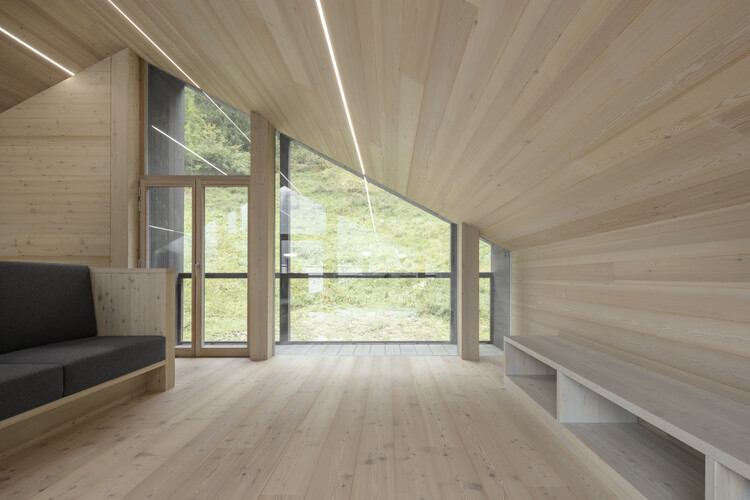
- Area: 170 m²
- Year: 2022
-
Photographs:Gustav Willeit
-
Lead Architects: Andrea Smaniotto, Barbara Sandri
-
Engineering: EPPLUS, Marco Filippi - EPPLUS

Concept. The refurbishment project transforms the existing building into a holiday home for a family that loves mountains. The recovery of this building called tabià (once used as a stable and barn) becomes an opportunity for reinventing, in a contemporary way, a building strongly linked to local agricultural tradition. Inserted in a sloping plot, in the second lane with respect to the roadside and the buildings facing it, the tabià develops into 3 levels: one partially underground with a hybrid structure in stone and concrete; an intermediate one with a structure in wooden pillars and beams, where there is also the main entrance; and an attic projecting cantilevered on all four sides.


In order to respect the character of the property, a clean and contemporary approach was taken to the renovation. In line with the desire to maintain the fragile balance and the coherence between the vernacular tradition and the contemporary character, details have been reworked which tend to give a more abstract and neutral character of the whole.



Strategy. The building has been dismantled, reconfigured, and expanded on the east side, offering an architectonic and functional reinterpretation of the building. The typical distribution scheme of the local building has been taken over: the interior space has been divided into 3 parts where the staircase occupies the central portion. On the lower floors, which are in close contact with the existing buildings around, rooms and service areas have been placed, while the living area has been placed in the attic, where it is possible to enjoy the beautiful landscape of the Dolomites.


The cozy and spacious kitchen/living room is located in the heart of the house and benefits from height-glazed floor-to-ceiling windows that face the mountains to the south and the forest to the north. The reinterpretation of traditional elements has allowed us to find a new language, a new coherent aesthetic linked to the local tradition. A project that is able to interact with the environment and tradition.



























